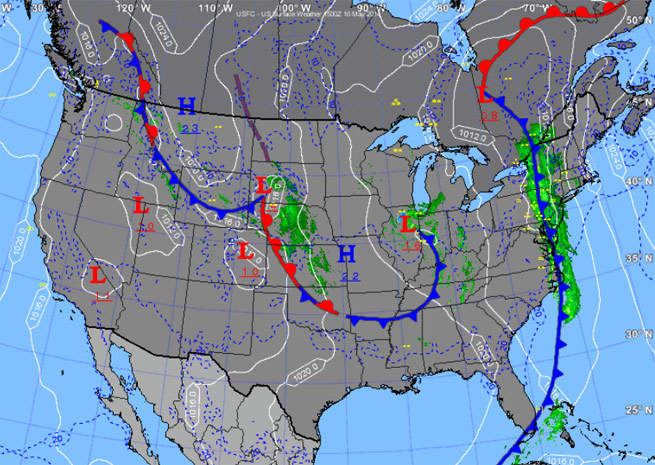A strong cold front stretches from Canada to Florida, and is on an eastbound track through central New York, eastern Pennsylvania, Maryland, and coastal Virginia and North Carolina. It’s powerful but slow-moving, spreading fog and dumping copious rain.
As spring weekends go, call this one a washout. But on the Friday before the system arrived in New England, it offered instrument pilots a fine chance to practice IFR flying under conditions that were—if not yet solid IMC—realistically headed downhill.
Would you benefit from that kind of practice?
The reader poll in the May 16 IFR Fix asked pilots to rate the practicing of familiar local instrument approaches under VFR conditions on a scale from one (poor) to five (excellent). The largest group gave it a three.
If flying the well-known local IFR circuit in sunshine rates a three, weather like this must get a five. Already, there are multiple broken cloud layers. Pre-frontal surface winds are strong and southerly. One station’s 1412Z observation indicates, "19017G24KT 10SM BKN029 BKN036 19/12 A3021."
Visibility is still good underneath, but "underneath" is forecast to get lower, as this terminal aerodrome forecast excerpt showed: "FM161500 17013KT P6SM SCT020 FM170100 16010KT P6SM BKN010 FM170400 14008KT P6SM OVC008 FM170700 14005KT 5SM BR OVC005."
Will the 1,000-foot broken ceiling hold off until 9 p.m. local? Already METARs are reporting more cloud layers, and stronger winds, than the TAF predicted.
CFIIs watch the weather too, so if your favorite instructor hasn’t already called to see if you want to add to your actual-IMC experience (or break into the time category for the first time), reach out when a chance like this arises. Such scenarios offer a good way to sample IMC, with margin. Fly a short IFR cross-country, descending through the cloud decks on the approaches and climbing back through for the return leg.
No one will have to remind you to keep track of the weather. You saw that front and those isobars, and you know it’s all headed your way. Knowing that the weather will deteriorate keeps a pilot focused.
It’s also a sure bet that, no matter how many times you have flown the home-field ILS under clear skies, shooting it with raindrops on the windscreen, clouds below, and 20 knots on the nose will put you in a whole new place.




